Intel Haswell Low Power CPU Review: Core i3-4130T, i5-4570S and i7-4790S Tested
by Ian Cutress on December 11, 2014 10:00 AM ESTCPU Benchmarks
The dynamics of CPU Turbo modes, both Intel and AMD, can cause concern during environments with a variable threaded workload. There is also an added issue of the motherboard remaining consistent, depending on how the motherboard manufacturer wants to add in their own boosting technologies over the ones that Intel would prefer they used. In order to remain consistent, we implement an OS-level unique high performance mode on all the CPUs we test which should override any motherboard manufacturer performance mode.
FastStone Image Viewer 4.9
FastStone is the program I use to perform quick or bulk actions on images, such as resizing, adjusting for color and cropping. In our test we take a series of 170 images in various sizes and formats and convert them all into 640x480 .gif files, maintaining the aspect ratio. FastStone does not use multithreading for this test, and results are given in seconds.
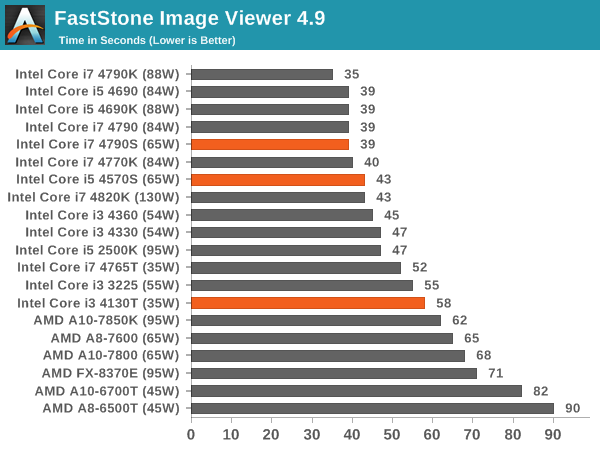
In single threaded mode these CPUs are designed to act like their non-S counterparts, except for the T which takes a bigger adjustment in the FastStone benchmark.
Dolphin Benchmark: link
Many emulators are often bound by single thread CPU performance, and general reports tended to suggest that Haswell provided a significant boost to emulator performance. This benchmark runs a Wii program that raytraces a complex 3D scene inside the Dolphin Wii emulator. Performance on this benchmark is a good proxy of the speed of Dolphin CPU emulation, which is an intensive single core task using most aspects of a CPU. Results are given in minutes, where the Wii itself scores 17.53 minutes.
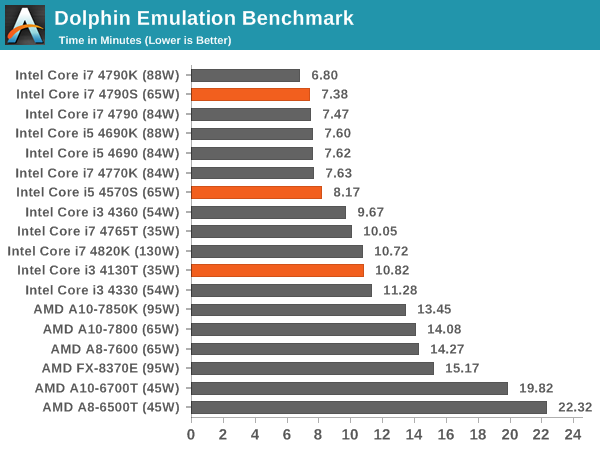
Dolphin is also single threaded, where the i7-S CPU performs on par with its non-S counterparts. The i3-T is more along the other i3 CPU we have tested.
HandBrake v0.9.9: link
For HandBrake, we take two videos (a 2h20 640x266 DVD rip and a 10min double UHD 3840x4320 animation short) and convert them to x264 format in an MP4 container. Results are given in terms of the frames per second processed, and HandBrake uses as many threads as possible.
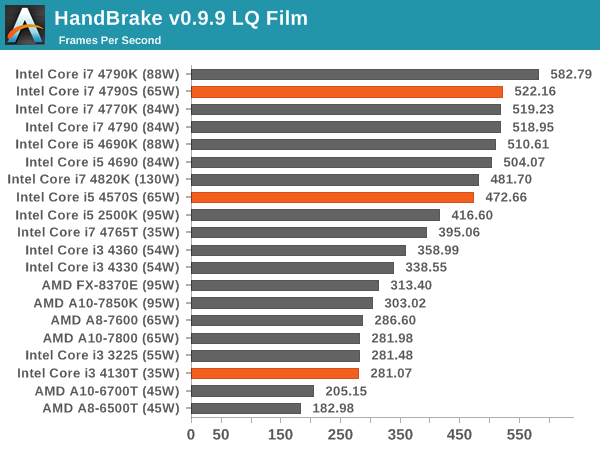
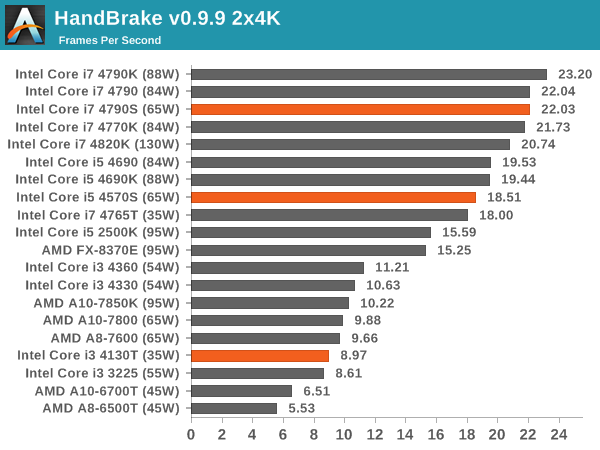
WinRAR 5.0.1: link
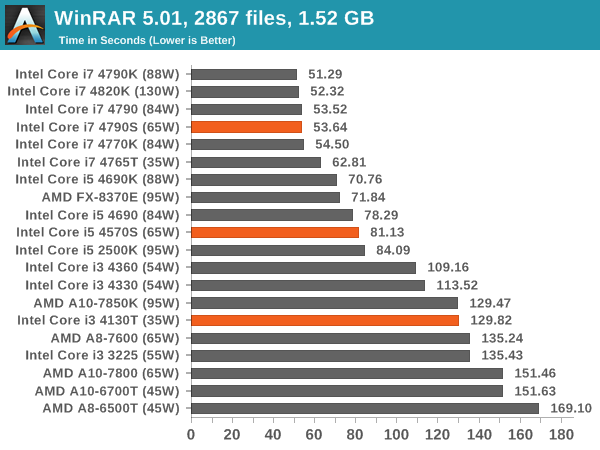
WinRAR exposes some of the variable multithreaded results, here showing the i3-T is a bit down on the non-T, but the S models are on par again.
3D Particle Movement
3DPM is a self-penned benchmark, taking basic 3D movement algorithms used in Brownian Motion simulations and testing them for speed. High floating point performance, MHz and IPC wins in the single thread version, whereas the multithread version has to handle the threads and loves more cores.

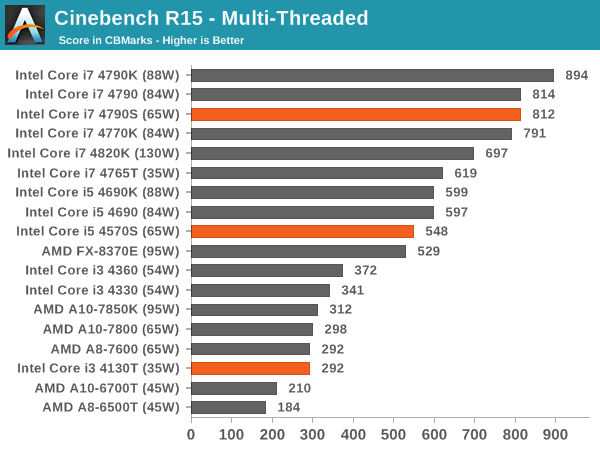
Surprisingly our i7-S CPU seems too perform as well as the non-S CPU.
Web Benchmarks
On the lower end processors, general usability is a big factor of experience, especially as we move into the HTML5 era of web browsing. For our web benchmarks, we take four well known tests with Chrome 35 as a consistent browser.
Sunspider 1.0.2
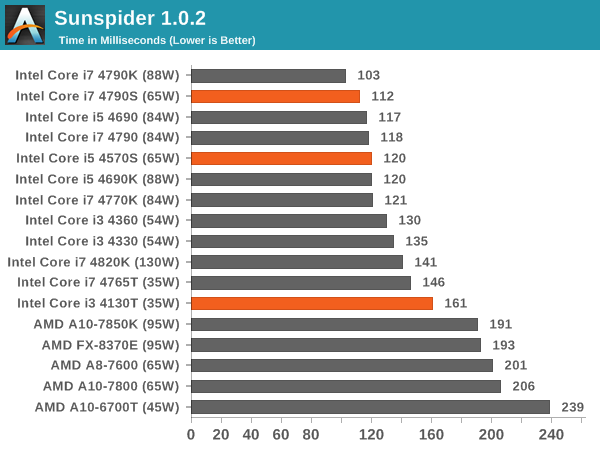
Mozilla Kraken 1.1
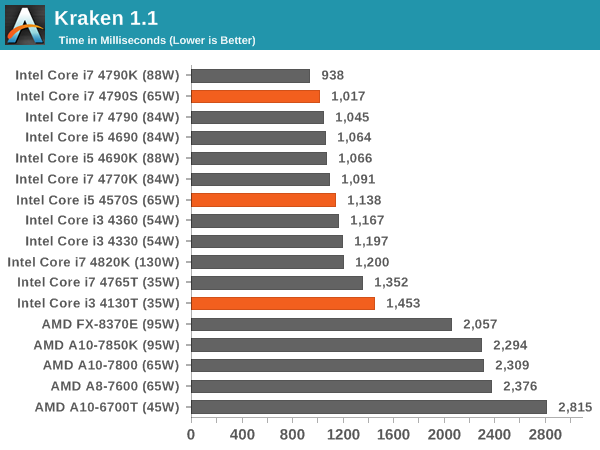
WebXPRT
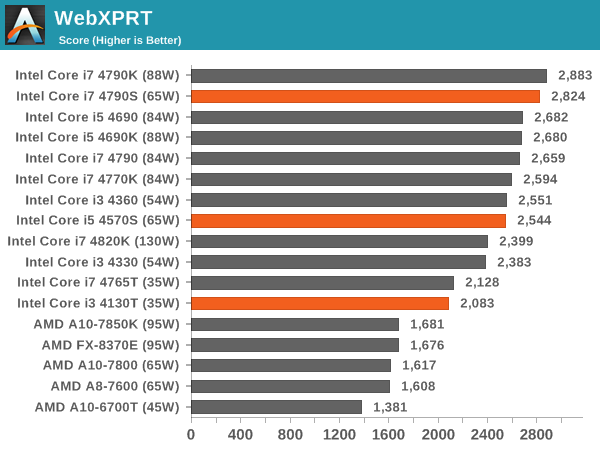
Google Octane v2
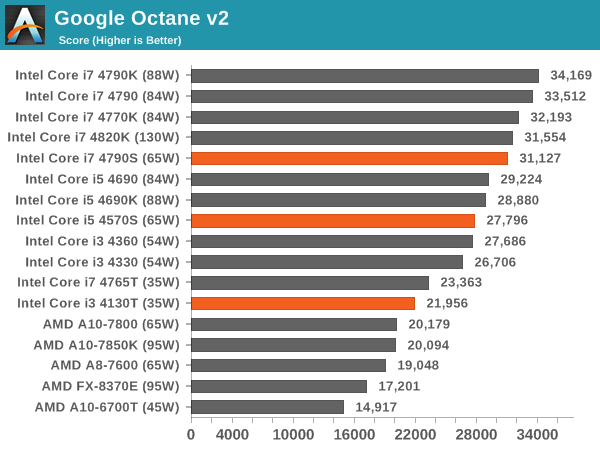










76 Comments
View All Comments
Wolfpup - Friday, December 12, 2014 - link
I'm actually looking at an HP all in one (for a kitchen computer) that has an S series CPU, and was wondering what the heck it was.35 watts for a dual core Haswell @ at least 2.9GHz is actually really impressive when you think about it. I still can't help but compare everything to my 125-watt single core 3.4GHz Prescott from ten years ago. That's a ton more performance crammed in to about 1/4 the power :) Also seems like the 35 watt parts are basically like the normal mobile parts are (before low end systems switched from 35 and 45 watt cpus to 15-19 watt ULV CPUs practically across the board)
samer1970 - Saturday, December 13, 2014 - link
Hello,can you please run the benchmarks again for the xeons with HT disabled? i want to see how the 65Watts 12 cores compares to the 6 cores i7 with hyperthreading disabled on the 12 cores one.
that is 12 cores xeon at 1.8 ht disabled versus 6 cores at 3.6 with ht enabled , which is lolgically 1.8 with ht but at 140w
FYoung - Saturday, December 13, 2014 - link
It would be beneficial to Anandtech and its readers to edit articles like this more closely. It has multiple instances of confusing wording and wordiness.I mean this as constructive criticism in case it escaped your attention, in the hope that Anandtech will not let its standards slip.
LoneWolf15 - Sunday, December 14, 2014 - link
For future articles like this, can you post the integrated graphics? It can be crucial to people building an HTPC.LoneWolf15 - Sunday, December 14, 2014 - link
Clarification: can you post the model of IGP (4400,4600) in your charts? This can be very useful for someone who is saving power by not having a discrete GPU but wants the best Intel offers.coder543 - Sunday, December 21, 2014 - link
I don't know why you're using Linux-Bench. Phoronix Test Suite (PTS) is *the* well-established benchmark suite for Linux, and it can test a wide range of applications and synthetic benchmarks in a completely automated fashion.